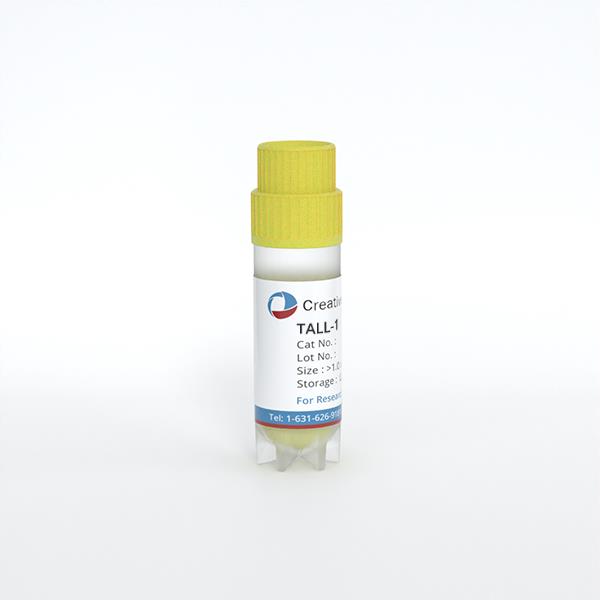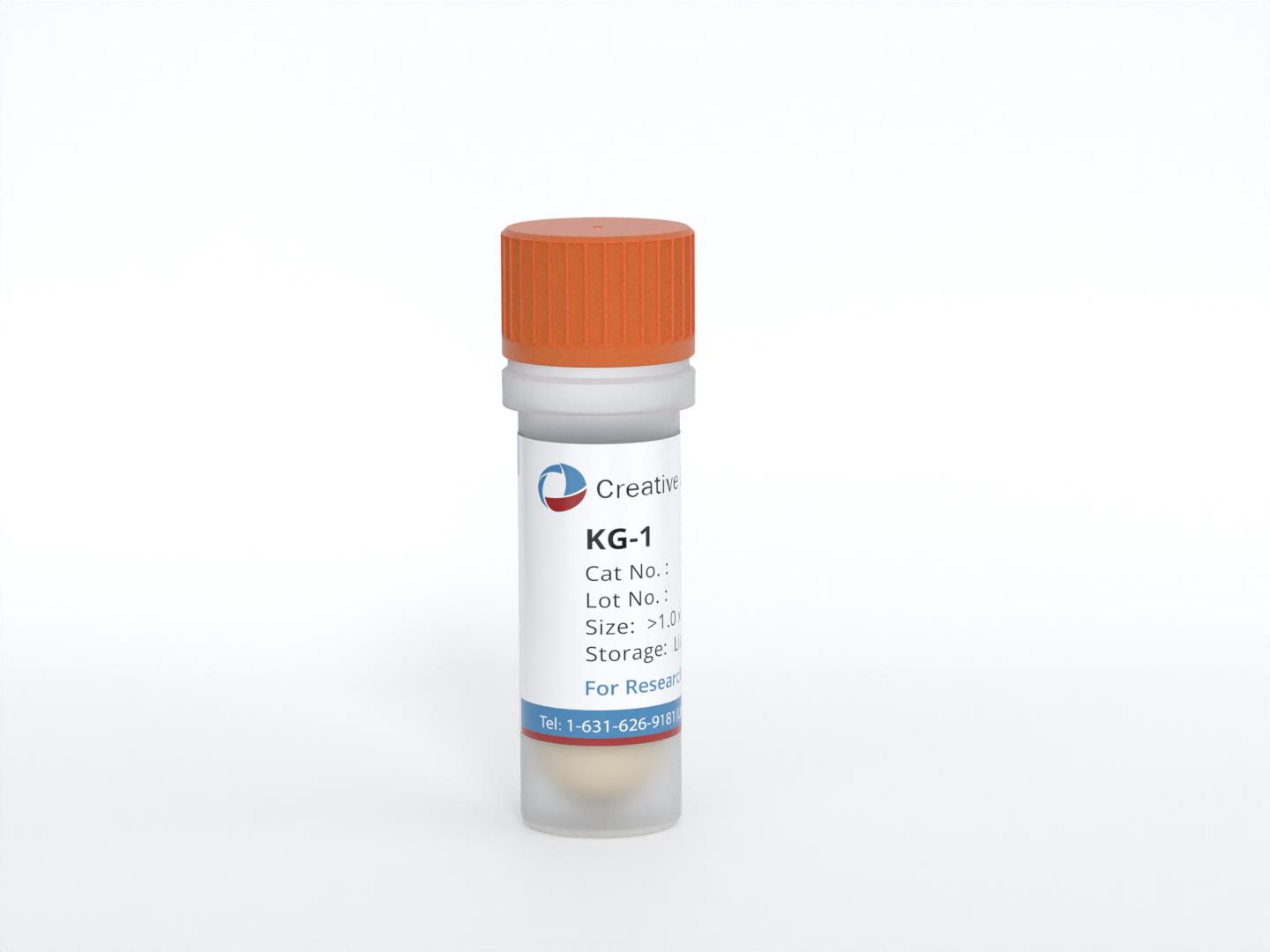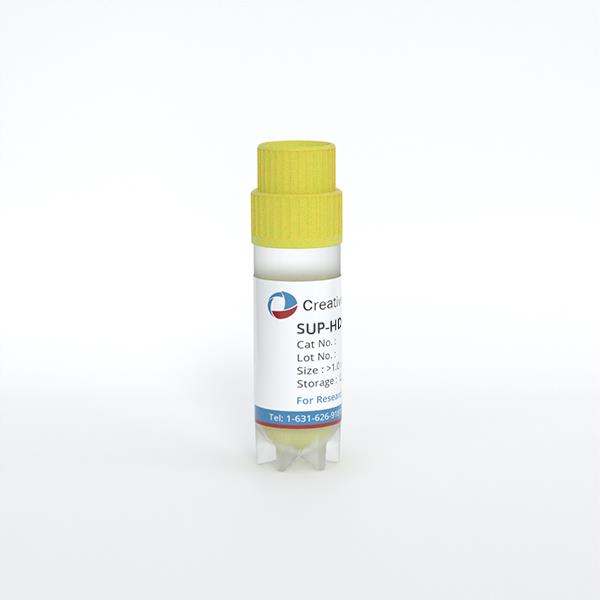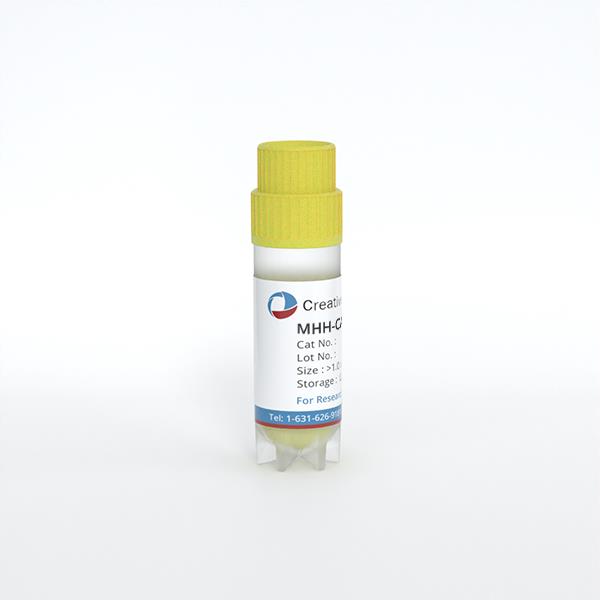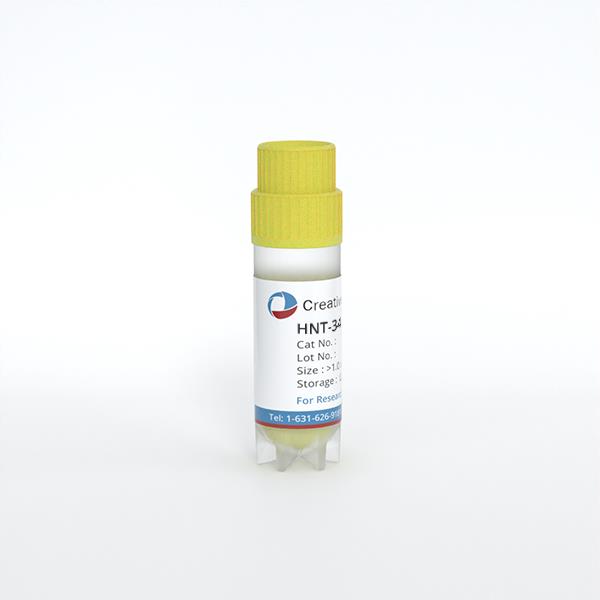
HNT-34
Cat.No.: CSC-C0601
Species: Homo sapiens (Human)
Source: Blood; Peripheral Blood
Morphology: round cells growing singly and in clusters in suspension
Culture Properties: suspension
- Specification
- Background
- Scientific Data
- Q & A
- Customer Review
Immunology: CD3 -, CD4 +, CD13 +, CD15 +, CD19 -, CD33 +, CD34 +, HLA-DR +
Viruses: PCR: EBV -, HBV -, HCV -, HIV -, HTLV-I/II -, SMRV -
HNT-34 was established from the peripheral blood of a 45-year-old female patient with acute myeloid leukemia (AML) transformed from chronic myelomonocytic leukemia (CMMoL) with 3q21q26 syndrome. Morphologically, HNT-34 cells are undifferentiated blasts which were negative for myeloperoxidase. HNT-34 cells are positive for CD4, CD13, CD33 and CD34, but negative for CD41a and CD42b. The cells actively proliferated in suspension with a doubling time of 26-27h in the absence of any growth factors. Neither proliferative advantage nor differentiation was observed with the addition of G-CSE GM-CSF, IL-3, TPO, DMSO or PMA.
The establishment of HNT-34 provides a valuable model for studying the biology of myeloid leukemia, exploring the mechanisms of leukemogenesis, and evaluating treatment strategies. At present, the research and application of HNT-34 are mainly focused on studying the efficacy of new anticancer drugs, understanding the mechanisms of drug resistance, and revealing the role of gene mutations in treatment response. HNT-34 has also been used to investigate the impact of the tumor microenvironment on leukemia progression, making it an important tool to advance our understanding of myeloid leukemia and improve clinical outcomes for patients.
NRIP1 Knockdown Affects Proliferation, Viability, and Response to Retinoic Acid in Chromosome 3 Rearranged Acute Myeloid Leukemia Cells
Aberrant expression of Ecotropic Viral Integration Site 1 (EVI1) is a hallmark of acute myeloid leukemia (AML) with inv(3) or t(3;3), which is a disease subtype with especially poor outcome. In studying transcriptomes from AML patients with chromosome 3q rearrangements, we identified a significant upregulation of the Nuclear Receptor Interacting Protein 1 (NRIP1) as well as its adjacent non-coding RNA LOC101927745. NRIP1 knockdown negatively affects the proliferation and survival of 3q-rearranged AML cells and increases their sensitivity to all-trans retinoic acid, suggesting that NRIP1 is relevant for the pathogenesis of inv(3)/t(3;3) AML and could serve as a novel therapeutic target in myeloid malignancies with 3q abnormalities.
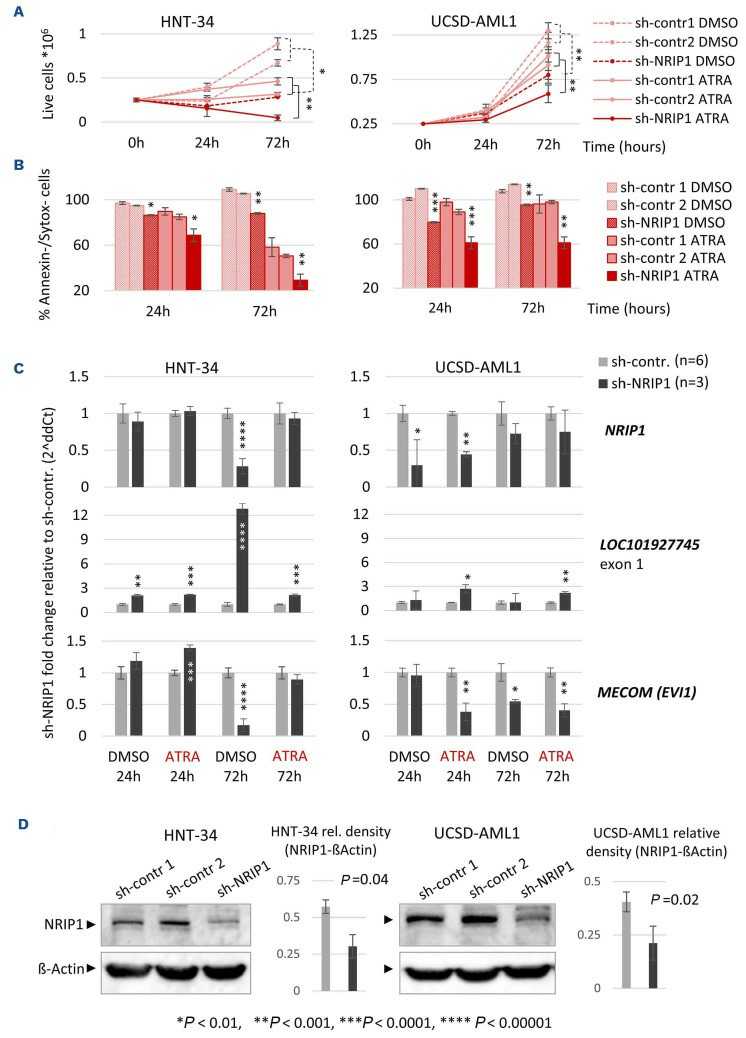 Fig. 1. Knockdown of NRIP1 induces apoptosis and increases sensitivity to all-trans retinoic acid in t(3;3) acute myeloid leukemia cells (Grasedieck, Sarah, et al. 2021).
Fig. 1. Knockdown of NRIP1 induces apoptosis and increases sensitivity to all-trans retinoic acid in t(3;3) acute myeloid leukemia cells (Grasedieck, Sarah, et al. 2021).
Differential Nucleolar Stress Response in NPM1-Mutated Versus NPM1 wild-type AML cells
Acute myeloid leukemia (AML) with mutated NPM1 accounts for one-third of newly diagnosed AML. Despite recent advances, treatment of relapsed/refractory NPM1-mutated AML remains challenging, with the majority of patients eventually dying due to disease progression. Dactinomycin is a low-cost chemotherapeutic agent, which has been anecdotally reported to induce remission in NPM1-mutated patients, although its mechanism of action remains unclear. To explore whether NPM1-mutated cells may have lower thresholds for nucleolar stress response than NPM1 wild-type cells, we exposed to dactinomycin OCI-AML3 and IMS-M2 cells as well as OCI-AML2 and HNT-34 cells, all of which have detectable TP53 levels by western blot. We found that low-dose dactinomycin generates more efficient stress response in cells expressing NPM1 mutant compared to wild-type cells, suggesting that NPM1-mutated AML may be more sensitive to nucleolar stress.
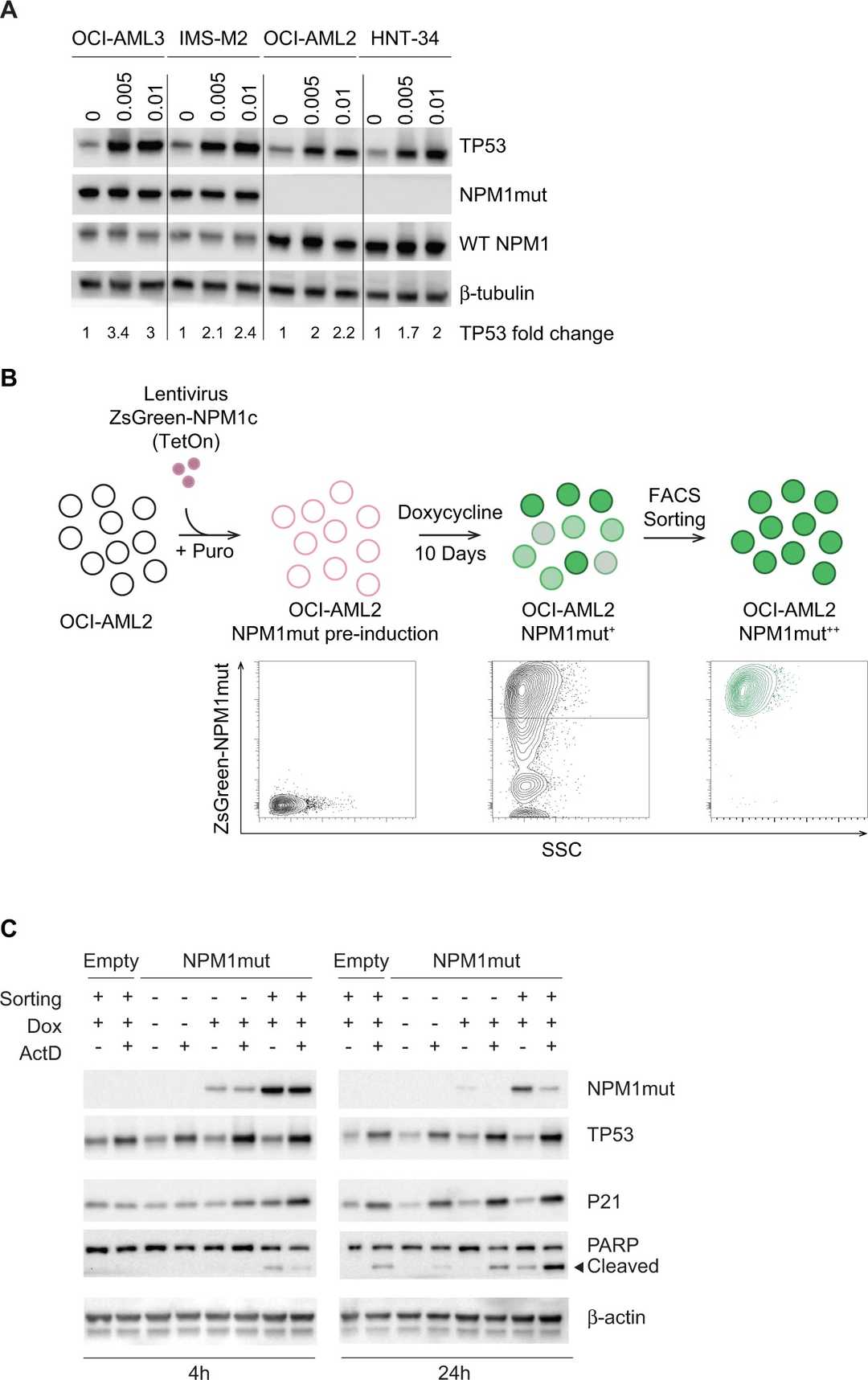 Fig. 2. NPM1mut facilitates nucleolar stress response to dactinomycin (Gionfriddo, Ilaria, et al. 2021).
Fig. 2. NPM1mut facilitates nucleolar stress response to dactinomycin (Gionfriddo, Ilaria, et al. 2021).
Ask a Question
Write your own review
- You May Also Need
- Adipose Tissue-Derived Stem Cells
- Human Neurons
- Mouse Probe
- Whole Chromosome Painting Probes
- Hepatic Cells
- Renal Cells
- In Vitro ADME Kits
- Tissue Microarray
- Tissue Blocks
- Tissue Sections
- FFPE Cell Pellet
- Probe
- Centromere Probes
- Telomere Probes
- Satellite Enumeration Probes
- Subtelomere Specific Probes
- Bacterial Probes
- ISH/FISH Probes
- Exosome Isolation Kit
- Human Adult Stem Cells
- Mouse Stem Cells
- iPSCs
- Mouse Embryonic Stem Cells
- iPSC Differentiation Kits
- Mesenchymal Stem Cells
- Immortalized Human Cells
- Immortalized Murine Cells
- Cell Immortalization Kit
- Adipose Cells
- Cardiac Cells
- Dermal Cells
- Epidermal Cells
- Peripheral Blood Mononuclear Cells
- Umbilical Cord Cells
- Monkey Primary Cells
- Mouse Primary Cells
- Breast Tumor Cells
- Colorectal Tumor Cells
- Esophageal Tumor Cells
- Lung Tumor Cells
- Leukemia/Lymphoma/Myeloma Cells
- Ovarian Tumor Cells
- Pancreatic Tumor Cells
- Mouse Tumor Cells

